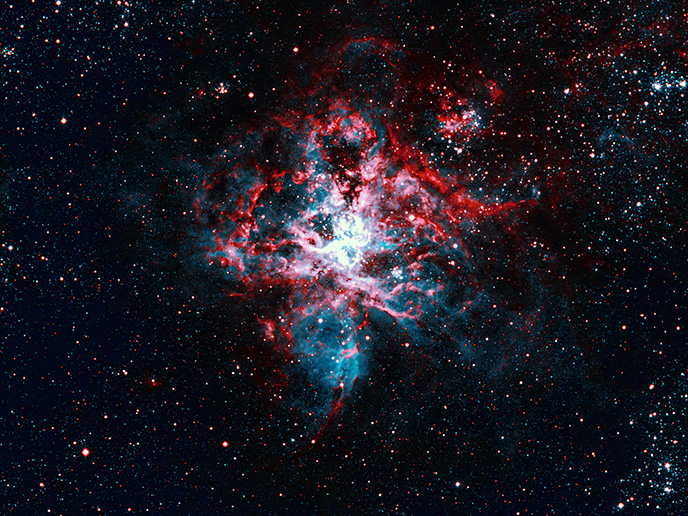Exploring the timelines of star-system formation
Stars have long been thought to form first in a solar system, with leftover material of dust and gas slowly becoming planets. Yet recent evidence suggests that planets and stars form simultaneously, challenging standard classification models for the evolution of star-planet systems. This suggests the formation of rudimentary planets begins at an earlier stage than we thought and the timelines of various evolutionary processes are different. Describing the exact timelines presents several difficulties, however. “The major problem is that while star- and planet formation is a quick process on astronomical timescales, it still covers several hundred thousand, or even million years, which is not comparable to our human lifetime,” explains Gábor Marton(opens in new window), researcher at the Konkoly Observatory in Hungary and project coordinator of the NEMESIS(opens in new window) project. Seeing the whole process requires statistically meaningful samples of young stellar objects (YSOs) in slightly different evolutionary stages. The first goal of NEMESIS – a partnership between the Konkoly Observatory of the Hungarian Research Network, the University of Geneva(opens in new window) and the University of Vienna(opens in new window) – was to build a panchromatic YSO catalogue, with observations that span a range of wavelengths across the electromagnetic spectrum. The other significant difficulty is that in these early evolutionary stages, the range of the spectrum in which YSOs emit most of their energy varies, making them difficult to identify. Standard classification relies on infrared, which can be misleading. NEMESIS therefore also sought to develop a more precise classification method.
Creating a panchromatic dataset
The new panchromatic dataset is the most complete collection of YSOs ever created, and helps to reveal the evolutionary stages of YSOs, ranging from protostars to young stars. The task was so complex the database was split into two. The first part of the collection focused on just one star-forming region, the Orion star formation complex (OSFC) – the largest star-forming region in the solar neighbourhood. The team created a highly detailed database on stellar parameters including temperature, mass, speed of rotation and velocities at which the star moves compared to the Earth. “This is all valuable for understanding physical conditions in young stars and their environments,” says co-investigator Marc Audard, senior lecturer and researcher at the University of Geneva. For this, the team used machine learning (ML) to sift through academic literature from the past 30 years, narrowing down the selection from over 118 000 initial entries to around 1 200 papers. The second part is an all-sky collection with more than 3 million YSO candidates. The team used various ML and computer vision techniques to complement historical datasets with new data. “The achieved purity and completeness of the final catalogue allows us, and the community, to use it as a benchmark in the future, and it is especially valuable for ML-based studies,” Audard adds.
A new understanding of star formation
The project contributed to the understanding of star formation on many different levels, mostly by showing the potential of ML/artificial intelligence in this field to gain even more insights from existing data. “With NEMESIS we touched a topic that has much more in it, and we kept finding new aspects and had new ideas throughout the whole project,” notes Marton. “The developed tools are being used by students, our methods fascinate our colleagues, and our enthusiasm is stronger than ever.”







